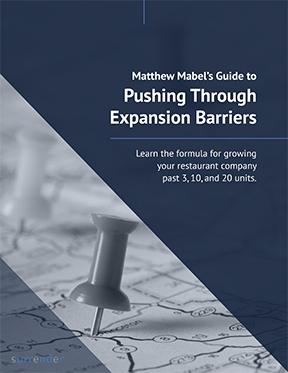
A friend of mine told me she would enjoy moving every year.
Wow! I had not heard that one before.
But she abandoned that dream, realizing her kids need a stable home.
I remembered this when my daughter asked me, “Is this our forever house?”
She wanted know that her roots—the ones she had put down over 5 years in the home she had lived in since she was 2 years old—would last.
Everyone Needs Security and Stability
When I start helping successful owners of growing restaurant companies make their companies even more successful, I know they have brought me in to change things for the better.
That’s because, if you are doing your job correctly, you change things—and often.
The issue is that changing can alarm your team.
Like “Home Alone Face” type of alarm.
There is an emoji for that.
As industry leaders we spend a lot of our time installing new ideas, techniques, menu items, people, systems, and marketing.
Meanwhile, a lot of our kids do not want to move so often.
When things change, everyone feels a need to evaluate that change.
Whether you know it or not, each change results in a virtual, silent poll being conducted—with everyone involved.
If they don’t speak up, you may have to judge results from the strained or enthusiastic looks on their faces.
The One Word that “Changes” Everything
I have one simple, proven way to make change without freaking people out like the weatherman here in Dallas had just forecast 2 inches of snow.
How? Change the word.
Start “trying” things instead of “changing” things.
After all, there’s a reason we test new culinary offerings as specials before they go on the menu.
“Try this” stands for a commitment to improvement, but also sends a message that, if an idea does not work, you are willing to scrap it.
When you try things, you eliminate the downside.
No one has to vote no in their imaginary referendum.
Let’s say you have determined it might be smart to convert your fast casual to full service. Be ready to try that—but at one unit, not in the whole system.
Or you want to rework your schedules to staff your restaurants more effectively for busy times and slow times.
Or you want to ditch your mystery shopping data for an online survey.
When you stop saying, “change!” and start saying, “try,” your people become more comfortable—and less afraid of losing their security blankets.
When we feed our brands a continuous flow of new ideas that we “try,” we build revenue, profit, net worth, and ownership’s personal freedom.
Over to you. What have you decided to “try” in your organization?

